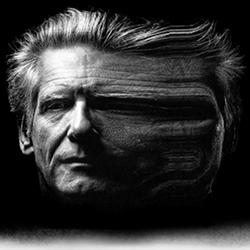
TIFF’s Objects of Desire - The Cinema of Claire Denis Review: White Material (2009)

Cast: Isabelle Huppert, Christopher Lambert, Isaach De Bankolé
Director: Claire Denis
Country: France | Cameroon
Genre: Drama | War
Editor’s Notes: The following review is part of our coverage for TIFF’s Objects of Desire: The Cinema of Claire Denis which runs from October 11th to November 10th at TIFF Bell Lightbox. For more information on upcoming TIFF film series visit http://tiff.net and follow TIFF on Twitter at @TIFF_NET.
Enigmatic in a style only proffered by Claire Denis, White Material (2009) uses smoke, dust, and oblique images to endow the viewer with a subjective consciousness that resonates with the experiences of the closely examined characters. In her usual formal sensibility, Denis chooses to use close-ups and point-of-view shots to support personal expressivity in her characters. In effect, much of what occurs outside of the protagonist’s direct engagements—including the name and exact location of this war—are made incidental, as it is personal experience that is primarily worth exploring here. For this reason, the camera tends to stick with the character whose life it is capturing, and everything else falls by the wayside. This is not to say that the context is not important, but that Denis brings the context into the picture through absenting it in the image. What is out of the frame speaks to the scenario, but what is in the frame tends to speak to the substance and emotion which Denis wishes to express through her characters.
In her usual formal sensibility, Denis chooses to use close-ups and point-of-view shots to support personal expressivity in her characters.
To give you an example, there is a scene early on wherein Maria (Isabelle Huppert) pleads with her workers to stay, despite the escalating danger in the town. During this scene, the camera stays almost exclusively with Maria, even though there are at least a dozen people in the scene. These people are shown briefly, but made absent through the framing which leaves Maria in close up. Off-screen sounds therefore shed context while the onscreen image of Maria makes the viewer partial and privy only to Maria’s subjective experience. Throughout the film, a few other characters—the boxer, Manuel, etc.—are given personal expression in this vein, and Denis camera works in the same way: to evoke the circumstances from the point of view of a given character’s subjective appreciation of the circumstances. Many POV shots are used to support this; for example, when the boxer is shown in the beginning—after the flash-forward first scene—he is riding a horse through a town and visiting the dead bodies. At one point, after the camera has been in close up for multiple long takes, a POV shot of several dead bodies is shown. Denis cuts back to a close up of the boxer and the viewer now understands why he was—and still is—expressing such a haunting state of sorrow and grief.

While white material is perhaps most clearly a metaphor for the white French people trying to occupy a country that does not belong to them, the concept of white material is taken far beyond the prejudices of war. When Manuel enters the film about half way through, a stronger image of white material may be realized. Earlier in the film, one of the rebel boys refers to a fake gold lighter as ‘white material’; later on, the young rebels refer to Manuel as a ‘yellow dog’. Cherif also calls Manuel a dog. When it comes to white material, there seems to be a variety of interpretations of white prejudice, such as phoniness, ignorance, and mockery. Manuel running around with the wheelbarrow like a dog is perhaps the most illustrative image of white material.
Throughout the film, Denis employs a highly powerful soundtrack with several musical motifs. Strongly complementing the natural locations and green colour palette, the atmospheric and sometimes surreal music perfectly expresses the fight between peace and war through sound. For example, in what is perhaps the best scene of the entire film, children with guns move ever so slowly forward into the jungle to attack a lone soldier—unknown to them at the time as the boxer. As they weave through the trees, duck down low, and hold their rifles up in warning, a powerful musical score complete with a flute motif, guitar in the background and percussive instruments which grow as the scene develops, perfectly synthesizes with the visual aesthetic. This is an incredibly moving and well-shot scene that provides a strange, almost hallucinatory affect on the viewers. This is what Denis’ best scenes are often commended for; the mystery and excitement is unparalleled.
Throughout the film, Denis employs a highly powerful soundtrack with several musical motifs. Strongly complementing the natural locations and green colour palette, the atmospheric and sometimes surreal music perfectly expresses the fight between peace and war through sound.
It is never entirely clear which side of the war Denis, or her main protagonist Maria, side with. Neither the rebels nor the militia are portrayed as being correct, and there are conflicts on both sides which affect Maria, her family, and her coffee plantation. This choice to obscure interpretation is what Denis is oft credited for; she chooses to allow her films to exist in their own world, without requiring interpretation to crack the enigma she has created. When the film comes full circle, and shots from the beginning are reprised at the end, Denis suggests that the cycle is not over—it is always beginning. While the final scene begs you to re-watch the beginning in order to better understand what happens to each character, the scene’s mood and the atmosphere of war expressed through the subjective experiences of the characters take precedence over the characters illustrated throughout the film. Whatever happens to them, this situation continues forward; the atrocities and the war are not over.
Related Posts
![]()
Kamran Ahmed
![]()
Latest posts by Kamran Ahmed (see all)





























